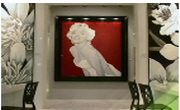영화나 애니메이션 속 캐릭터의 심리적인 감정묘사가 잘 표현되면 관객이 캐릭터의 감정에 동화되기 쉽고, 이는 극에 대한 몰입도를 높이는 결과를 낳는다. 반대로 애니메이터가 캐릭터의 ...
http://chineseinput.net/에서 pinyin(병음)방식으로 중국어를 변환할 수 있습니다.
변환된 중국어를 복사하여 사용하시면 됩니다.
- 中文 을 입력하시려면 zhongwen을 입력하시고 space를누르시면됩니다.
- 北京 을 입력하시려면 beijing을 입력하시고 space를 누르시면 됩니다.
https://www.riss.kr/link?id=A107214031
- 저자
- 발행기관
- 학술지명
- 권호사항
-
발행연도
2020
-
작성언어
Korean
-
주제어
감정표현 ; 표정 ; 놀람 ; 공포 ; 캐릭터 애니메이션 ; the expressions of the emotion ; the facial expressions ; surprise ; fear ; character animation
-
등재정보
KCI등재
-
자료형태
학술저널
- 발행기관 URL
-
수록면
81-103(23쪽)
-
KCI 피인용횟수
0
- 제공처
- 소장기관
-
0
상세조회 -
0
다운로드
부가정보
국문 초록 (Abstract)
영화나 애니메이션 속 캐릭터의 심리적인 감정묘사가 잘 표현되면 관객이 캐릭터의 감정에 동화되기 쉽고, 이는 극에 대한 몰입도를 높이는 결과를 낳는다. 반대로 애니메이터가 캐릭터의 감정표현을 제대로 표현해내지 못한다면 관객이 캐릭터의 감정에 공감할 수 없으므로 스토리 자체에 대한 몰입을 떨어뜨리는 결과를 낳는다. 따라서 이야기를 잘 전달하고 관객을 극에 몰입시키기 위해서는 감정에 따른 표정과 몸짓의 표현을 사실적인 근거를 토대로 정형화하여 표현할 필요성이 있다. 그런데, 감정에 따른 표정과 몸짓의 표현법에 대한 방법론을 제시하는 애니메이션 서적은 흔치 않아, 우리나라의 전체적인 애니메이션 수준이 높아졌음에도 불구하고, 여전히 캐릭터의 감정표현 만큼은 대부분 어색한 게 사실이다. 따라서 본 논문은 캐릭터 애니메이션을 함에 있어 감정에 따라 다르게 나타나는 표정과 몸짓에 대한 특징에 대해 연구하여, 애니메이터들이 도움을 받을 수 있도록 사실적이고 체계적인 방법론을 제시하는 데 그 목적이 있다. 먼저 연구방법으로는 사회학자와 심리학자, 의학자의 과학적 이론에 근거하여 감정 표출에 대해 선행연구 하였고, 선행연구 되었던 이론이 사람들의 감정에 따라 표정과 몸짓에 실제로 어떻게 반영되었는지 검증하였으며, 다양한 애니메이션의 사례분석을 통해 앞서 연구한 놀람과 공포에 따른 표정과 몸짓의 특징을 애니메이션 캐릭터에 효과적으로 적용시키기 위한 방법론에 대해 살펴보았다. 연구결과, 놀람과 공포 모두 큰 에너지를 필요로 하는 스트레스를 발생시켰기 때문에, 스스로를 위안하려는 자기접촉행동과 위험으로부터 자신을 보호하려는 회피의 몸짓 등이 관찰되었고, 표정의 변화가 컸다. 놀람과 공포의 감정에 있어 표정의 특징은 정형화시킬 수 있는 공통점을 보였고, 성별에 따른 유의미한 차이점은 발견할 수 없었다. 몸짓의 특징 또한 정형화시킬 수 있는 일련의 공통점을 보였는데, 몸짓의 경우 성별에 따른 특정몸짓의 선호, 즉 여성성이 강조되거나 남성성이 강조되는 세부적인 몸짓의 차이점이 나타났다.
다국어 초록 (Multilingual Abstract)
If the psychological emotional portrayal of a character in a movie or animation is well expressed, the audience is likely to sympathize with the character’s emotions, which results in a higher level of immersion in the play. On the contrary, if the ...
If the psychological emotional portrayal of a character in a movie or animation is well expressed, the audience is likely to sympathize with the character’s emotions, which results in a higher level of immersion in the play. On the contrary, if the animator fails to express the character’s emotions properly, the audience cannot sympathize with the character’s emotions, which results in a drop in the immersion into the story itself. Therefore, in order to convey the story well and immerse the audience in the play, it is necessary to formalize the expressions of emotion and gestures based on realistic grounds. However, it is not uncommon for animation books to suggest methodologies for expression of emotional expressions and gestures, and despite the heightened level of animation in Korea, it is still mostly awkward for characters to express their emotions. Therefore, this paper studies the features of facial expressions and gestures that appear differently depending on emotions in character animation, and aims at presenting realistic and systematic methodologies for animators to get help. First of all, based on the scientific theories of sociologists, psychologists, and medicalists, we conducted a prior study on the expression of emotions, verified how the theories that had been studied were actually reflected in facial expressions and gestures according to people’s emotions, and examined the methodology for effectively applying the characteristics of facial expressions and gestures according to surprise and fear previously studied through the case analysis of various animations. As a result of the study, both astonishment and fear produced stress that required great energy, the self-contact behavior to comfort oneself and the gesture of avoidance to protect oneself from danger were observed, and the change of facial expressions was great. In the emotion of surprise and fear, the features of facial expressions showed a common feature that could be stereotyped, and no significant differences could be found by gender. The features of gestures also showed a series of commonalities that could be stereotyped, with the preference for specific body gestures by gender, namely the difference in detailed gestures that emphasize femininity or masculinity.
목차 (Table of Contents)
- 1. 서론
- 2. 감정의 분류와 표정을 만드는 안면근의 이해
- 3. 놀람과 공포의 감정에 따른 표정과 몸짓의 특징 이해
- 4. 캐릭터의 감정이 표정과 몸짓에 잘 나타난 애니메이션 사례분석
- 5. 결론
- 1. 서론
- 2. 감정의 분류와 표정을 만드는 안면근의 이해
- 3. 놀람과 공포의 감정에 따른 표정과 몸짓의 특징 이해
- 4. 캐릭터의 감정이 표정과 몸짓에 잘 나타난 애니메이션 사례분석
- 5. 결론
- 참고문헌
- Abstract
참고문헌 (Reference)
1 문국진, "표정의 심리와 해부" 미진사 2007
2 데즈먼드 모리스, "털없는 원숭이" 문예춘추사 2006
3 안젤라 애커만, "인간의 75가지 감정표현법" 인피니티북스 2014
4 찰스 다윈, "인간과 동물의 감정표현" 지식을만드는지식 2014
5 김미숙, "애니메이션에 있어서의 여성성 표현에 관한 연구Ⅰ-여성의 몸짓 언어를 중심으로" 한국애니메이션학회 9 (9): 51-76, 2013
6 김미숙, "애니메이션에 있어서의 남성성 표현에 관한 연구 I 남성의 몸짓 언어를 중심으로" 한국애니메이션학회 10 (10): 31-58, 2014
7 마크 냅, "비언어 커뮤니케이션" 커뮤니케이션북스 2017
8 이상은, "몸짓 읽어주는 여자" 천그루숲 2018
9 피터 콜릿, "몸은 나보다 먼저 말한다" 청림출판 2004
10 "두산백과 ‘감정’ 항목"
1 문국진, "표정의 심리와 해부" 미진사 2007
2 데즈먼드 모리스, "털없는 원숭이" 문예춘추사 2006
3 안젤라 애커만, "인간의 75가지 감정표현법" 인피니티북스 2014
4 찰스 다윈, "인간과 동물의 감정표현" 지식을만드는지식 2014
5 김미숙, "애니메이션에 있어서의 여성성 표현에 관한 연구Ⅰ-여성의 몸짓 언어를 중심으로" 한국애니메이션학회 9 (9): 51-76, 2013
6 김미숙, "애니메이션에 있어서의 남성성 표현에 관한 연구 I 남성의 몸짓 언어를 중심으로" 한국애니메이션학회 10 (10): 31-58, 2014
7 마크 냅, "비언어 커뮤니케이션" 커뮤니케이션북스 2017
8 이상은, "몸짓 읽어주는 여자" 천그루숲 2018
9 피터 콜릿, "몸은 나보다 먼저 말한다" 청림출판 2004
10 "두산백과 ‘감정’ 항목"
11 "다음백과사전 ‘감정’ 항목"
12 "다음국어사전 ‘놀람’ 항목"
13 "다음국어사전 ‘공포’ 항목"
14 시부야 쇼조, "너 무슨 생각하니?" 아라크네 2002
15 데이비드 페렛, "끌리는 얼굴은 무엇이 다른가: 과학으로 밝혀낸 매력의 비밀" 엘도라도 2014
16 이형석, "기억의 신경심리학" 군자출판사 2003
17 제임스 보그, "그녀는 몸으로 말한다: 마음을 읽는 몸짓의 비밀" 지식갤러리 2012
18 Fagin, G., "The Artist’s Complete Guide to Facial Expression" Watson-Guptill Publications 1990
19 Moore, B. E., "Psychoanalytic terms & concepts" The American Psychoanalytic Association. 1990
20 Ekman, P., "Emotions Revealed" Henry Holt and Company 2003
21 Ekman, P., "Darwin and facial expression" Malor Books 2006
동일학술지(권/호) 다른 논문
-
트랜스미디어 콘텐츠로서의 한국 애니메이션 사례 연구 : 〈고스트 메신저〉를 중심으로
- 한국애니메이션학회
- 권재웅(Jae-Woong Kwon)
- 2020
- KCI등재
-
외상 후 스트레스 장애(PTSD) 청소년을 위한 실감콘텐츠 ‘확장현실 심리치료(XR Therapy)’ 활용 연구 : 〈겨울왕국(Frozen)〉 캐릭터 엘사 중심으로
- 한국애니메이션학회
- 김경수(Kyung-Su Kim)
- 2020
- KCI등재
-
애니메이션의 12원칙 중 역학에 관련된 원칙들과 실제 : 표정 애니메이팅을 중심으로
- 한국애니메이션학회
- 김규현(Gyu-Hyun Kim)
- 2020
- KCI등재
-
온플립러닝 교수법을 활용한 영상 융합 교과과정 개발연구 : 제품디자인전공에 필요한 전시형태와 프레젠테이션을 중심으로
- 한국애니메이션학회
- 김지윤(Jee-Youn Kim)
- 2020
- KCI등재
분석정보
인용정보 인용지수 설명보기
학술지 이력
| 연월일 | 이력구분 | 이력상세 | 등재구분 |
|---|---|---|---|
| 2022 | 평가예정 | 계속평가 신청대상 (계속평가) | |
| 2021-12-01 | 평가 | 등재후보로 하락 (재인증) |  |
| 2018-01-01 | 평가 | 등재학술지 유지 (등재유지) |  |
| 2015-01-01 | 평가 | 등재학술지 유지 (등재유지) |  |
| 2011-01-01 | 평가 | 등재학술지 선정 (등재후보2차) |  |
| 2010-01-01 | 평가 | 등재후보 1차 PASS (등재후보1차) |  |
| 2008-01-01 | 평가 | 등재후보학술지 선정 (신규평가) |  |
학술지 인용정보
| 기준연도 | WOS-KCI 통합IF(2년) | KCIF(2년) | KCIF(3년) |
|---|---|---|---|
| 2016 | 0.92 | 0.92 | 0.84 |
| KCIF(4년) | KCIF(5년) | 중심성지수(3년) | 즉시성지수 |
| 0.76 | 0.69 | 1.33 | 0.12 |




 DBpia
DBpia







